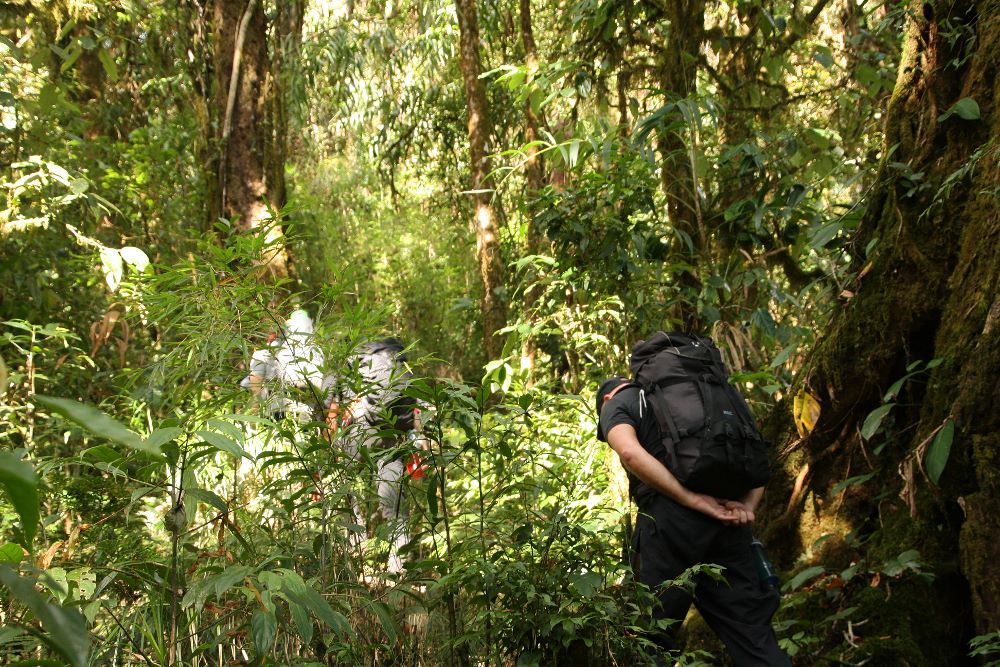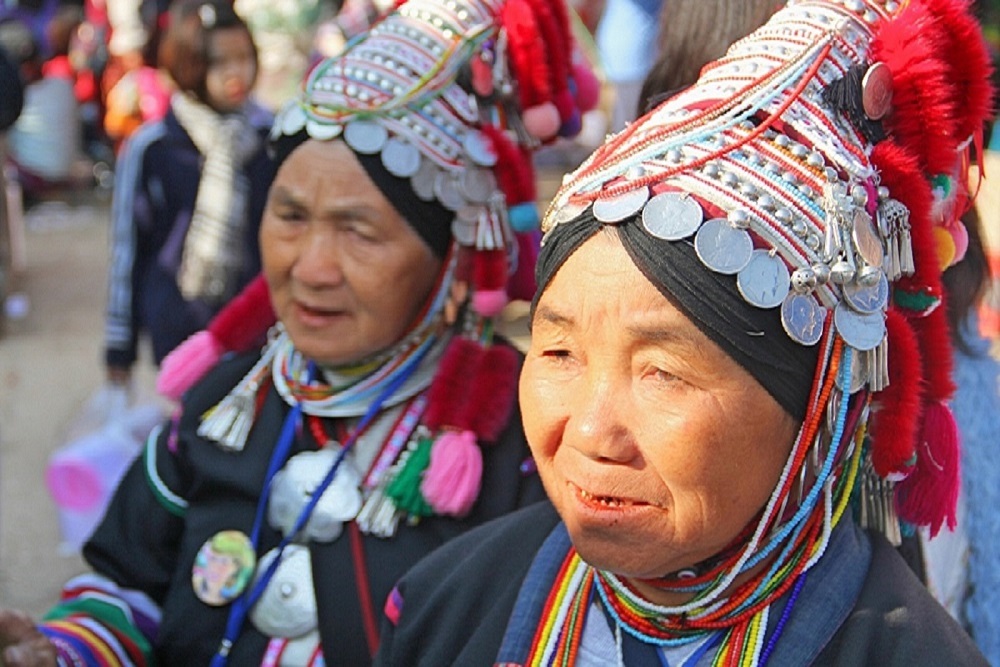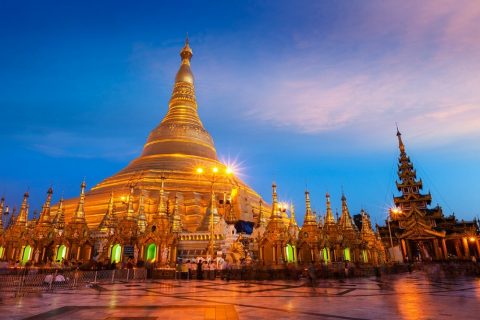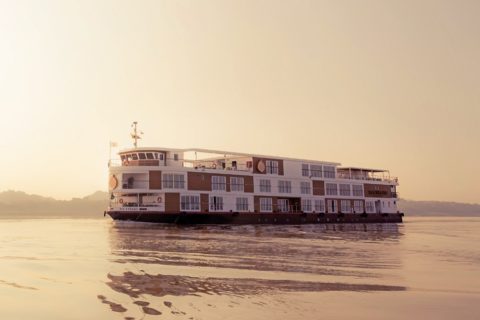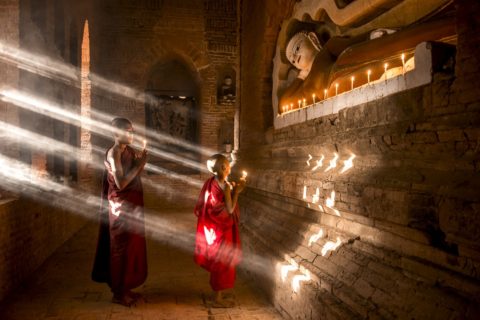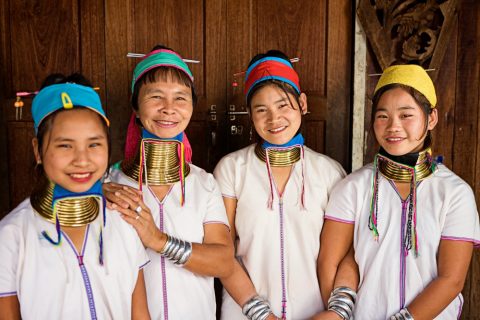Kyaing Tong travel guide
At the center of the Golden Triangle, infamous for its opium production, sits Kyaing Tong, a small, quiet town. It’s nestled among the rugged mountains of eastern Shan State and is considered by some to be one of the most scenic and beautiful towns in all Myanmar. The town has seen surrounding empires and kingdoms rise and fall, foreign powers come and go, but today it’s become a quiet testament to the town’s strength.
This town of tidy huts was once a hub of trade, both illicit and licit, and is a continuing crossroads of cultural exchange between China and Thailand. Because of that confluence, it’s called by several names, including Kengtung (or Keng Tung) and Chiang Tung.
Kyaing Tong lies at 3,000 feet next to a small lake called Naung Tong (Naung Tung) Lake and valleys of green rice fields surrounded by hills covered in forests. Its fertile soil produces colorful flowers, which fill the town’s gardens, and the abundant fruit orchards proudly display their achievements to passersby. Its elevation also allows Kyaing Tong to be spared from the terrible summer heat found in the cities and milder winters compared to the more mountainous regions in Shan State.
The town’s few attractions are easily explored on foot. There’s a mixture of aging Buddhist temples and slowly crumbling colonial architecture along its curved and dusty streets. Close to Naung Tong Lake is the 60-foot standing Buddha, Yat Taw Mu, to the southwest and the golden hilltop stupa, Wat Zom Kham (sometimes spelled Wat Jom Kham), to its east.
By day, the lacquerware and silver artisans exhibit their trade in their roadside shops, and the markets become a daily festival of the abundant produce and ethnic diversity of the area. By night, the twinkling stars are easily seen overhead even from the town’s center. The soothing guitar music drifts throughout the streets, giving the night an almost medieval atmosphere among the old buildings.
This medieval feeling is further encouraged with the city’s limited running electricity. The city’s electricity runs irregularly throughout the day and isn’t always reliable. However, hotels and larger restaurants will generally have their own generators.
Kyaing Tong has been inhabited for the past 800 years by a mixture of Tai ethnic groups such as Shan, Tai Khün, Tai Nuea, and Tai Lue (Tai Lü). They still live there today, making up a majority of the area’s population.
Naung Tong (Naung Tone) Lake
Located at the center of town, this serene lake is the perfect place to wander around and take in the atmosphere of this small town. Colonial architecture, temples, and teashops dot the perimeter, with Shan food and tea street vendors emerging in the evenings to feed the after work crowd. This is the place to go to satisfy late night cravings.
Central Market
The main market downtown brings the nearby hill tribes to trade and eat together. The market offers such a diverse collection of wares, from handicrafts made by the ethnic minority tribes, to the imported goods from China and Thailand. The vendors also sell fresh produce, bamboo baskets, and colorful mountain rice. The market is also an excellent place to taste some delicious authentic Shan dishes. It opens early in the morning till about 1PM.
Yat Taw Mu Buddha Image
This 60-foot tall (20 meter) standing Buddha is placed atop a hill southwest of Naung Tong Lake.
Wat Zom Kham (Wat Jong Kham)
This golden hilltop stupa overlooks Naung Tong Lake. It’s the oldest temple in the town, dating from around the 13th century.
One Tree Hill (Thitapin Taung)
Another hilltop feature of the town, this tree sits on the south side of the town. Even though it’s not the only tree on the hill, it is the oldest and largest. It’s a 245-year-old Kanyin Byu tree, a dipterocarp. Its prominence has made it a landmark for travelers coming towards the city as a way to indicate that they are close.
Maha Myat Muni Image (Wat Pra Sao Loang)
The image is based on a Buddhist legend about a king named Pyar Zoombu (Zabupadi in Myanmar) who was taught humility by the appearance of the Gautama Buddha. The appearance was so powerful the king was shaken out of his arrogance and became a devoted disciple of the Buddha. To commemorate the event the local people casted an image which is now known as the Maha Muni.
Loi Mwe
This British hill station about 1.5 hours drive south of Kyaing Tong is great for a day trip. The area has old colonial buildings and a century-old Catholic church nestled among the backdrop of forests, terraced rice fields, and a scenic lake.
Because of its location in eastern Shan State, Kyaing Tong is the perfect starting point for treks that explore farther into the Golden Triangle. The area is home to ethnic minorities like the Akha, Ann (Enn), Palaung, Lisu, Wa, Lishaw, Lahu, as well as the region’s ethnic majority, the Shan. The combination of the rich diversity, beautiful landscapes, and wonderful terrain makes the exploration to their villages a wonderful experience. Short treks to visit these friendly tribes and their villages in the nearby hills are available.
For those travelers who want a longer adventure and a challenge, there are several day treks to the border towns of Tachilek, which borders Thailand, and Mongla (sometimes spelled as Mong La), which borders China. The Mekhong River, with Laos on the opposite bank, lies to the southeast. It was only till very recently that this area of the country was an insurgent area, off limits to foreigners. For most trips to these border towns, a permit is needed before leaving Kyaing Tong and sometimes your passport must be left with the authorities.
Today, while visitors explore the tea-covered hills, they can also encounter Akha men with their homemade muskets slung over their shoulders, heading back from a successful hunt. Or, while in the Tai Loi villages of Wan Nyut and Wang Seng, you can see the longhouses they live in, with pigs and chickens roaming below the house. Along the way to Wan Nyut is also a 300-year-old wood monastery.
The area is home to many ethnic minorities, the larger groups being the Akha, Ann (Enn), Lahu Shi, Palaung, and Wa. Travelers can visit their villages through single or multi-day treks.
The Akha

The Akha tend to live in the higher elevations in the mountains. Originating from China, the Akha have been in Myanmar as early as the 1860s. Agriculture is their primary source of subsistence, typically growing soybeans, vegetables, and rice. Their religion, called zahv, is closely tied to the identity of the Akha ethnicity. It’s generally described as a mixture of Animism and ancestor worship with an emphasis on their connection with the land and natural cycles.
The Akha are usually recognized for their distinct traditional costumes, hand woven, expertly embroidered, and hand dyed with indigo. The headdresses of the Akha are one of the most elaborate items of the whole dress. Uniquely decorated by its owner, its design defines their age or marital status to others.
The Ann (Enn or Eng)
Like the Akha, the Ann generally live on the higher slopes of the surrounding hills and mountains around Kyaing Tong. However, unlike the Akha, the Ann have lived in the region for centuries, even predating the migration of the Shan. Their name means “black teeth” as evidenced by the group’s black-dyed teeth, a consequence of chewing the betel leaf and using charcoal as a natural black lipstick. This ritual is done to ward off evil spirits.
The Lahu
The Lahu are spread across the region. Along with Myanmar, they reside in China, Thailand, Laos, and Vietnam. They also have resettled in the United States as refugees, in response to fighting in the region. Lahu have a number of subgroups, with names referring to the traditional color of their dress.
Lahu women’s main skills deal with textiles. They weave with both back-strap and foot-treadle looms and can create delicate embroidery pieces. The Lahu men are skilled in creating useful objects from wood, bamboo, and rattan such as crossbows and musical instruments.
The Palaung
Palaung consist of three main subgroups: Palé, Shwe, and Rumai. They live in longhouses, around 30 meters (100 feet) or more that allow for extended families to live together. This focus on family is an extension of the culture, where family and land are the main emphases.
They practice a mixture of Animism and Buddhism. Their diet is related to their beliefs, with the Palaung primarily vegetarian, only occasionally adding fish to some meals. The livestock they have is used for work or trade and not for food. They grow a large variety of crops, including rice, peas, chilies, and their famous tea. Their pickled tea leaves are used in the famous Myanmar tea leaf salad, or laphet thoke, among other dishes.
The Wa
The Wa, which means “people of the cave” or “mountain dwellers”, live in an area called the Wa States. Spread across Myanmar, Thailand, and China, this ethnic group has been involved with much of the conflict in the region.
Many of the Wa can also speak Burmese or Mandarin in addition to their own language. The Chinese developed their written language in the late 1940’s. It’s been reported that only 1% of their members can read or write their own language.
Regarded and feared as fierce fighters, they practiced Animism, with an old tradition of Latou, or headhunting, as a sacrifice. However, today most of the Wa are Buddhist, with a small minority Christian
Based on the Shan (Tai) lunar calendar, Shan New Year is celebrated during the first moon of the first lunar month, which typically falls in early December. The celebration is one of the biggest ones in Kyaing Tong, with performances of song and dance, talent shows, and beauty competitions.
Burmese New Year, known as Thingyan, is also celebrated with equal enthusiasm. The three-day festival occurs during the Burmese month of Tagu, which is usually in April from 13 to 16.
Kyaing Tong celebrates Thingyan with a three-day “beating of the drum” where the local young men, fueled by alcohol, beat on an ancient buffalo hide drum. The ceremony reaches its peak when the drum is carried through a procession in town to a nearby shallow river, where most of the population jumps into the water and lets loose, dousing each other.
By air: This is the easiest way to get to Kyaing Tong. There are several airlines that have daily flights to Kyaing Tong (Keng Tung) from Heho and Mandalay. Some of these travel via Tachileik by the Thai border.
Overland: It is possible to drive to Kyaing Tong 4-5hrs from Tachileik from Mae Sai (Thailand) border.
Longer and more adventurous is 2 days drive from Inle Lake region or Taunggyi to Kyaing Tong requiring a night stop along the way. This is still considered special region area and requires travel permit which can be arranged by Discovery DMC.
CHECK OUT OUR
KYAING TONG TOURS
DISCOVERY MYANMAR HIGHLIGHTS 12D
This guided tour will introduce you to the cultural highlights and most famous destinations in Myanmar. From the bustling streets of Yangon to the awe-inspiring temple plains of Bagan....
MYANMAR FOR CONNOISSEURS
Experience the luxury onboard the top class Ayeyarwaddy River cruise, visiting major cultural highlights of temple dotted Bagan and royal Mandalay, adding with few days relaxing by the calm Inle...
MYANMAR PHOTOGRAPHY TOUR 10D
Perfect tour for first-timers with special interest in photography, covering the six most popular and photogenic destinations in the country - Mandalay, Bagan, Inle Lake, Pindaya, Golden Rock and...
14D TRIBES OF MYANMAR
Experience different life and culture on our Myanmar Family Tour, make new friends and meet the friendly locals, learn about the magical legends and tales of the mighty kingdoms and mysterious...

